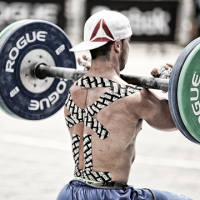
Rock Tape: Fascial Movement Taping Certification
What is RockTape?
RockTape FMT is a movement-based approach of kinesio-taping that focuses on ‘taping movement, not muscles.’ The actual tape is designed to increase stability for improved movement – unlike tapes that limit movement. The tape is stickier than traditional kinesiotape lasting for 3-5 days while facilitating good range of motion.
Immobility is often a compensatory stabilization strategy – taping areas to improve stability can greatly increase range of motion. Using Charlie Weingroff’s definition of mobility (central nervous system control of a joint to move without influence) athletes can understand that improving stability can improve mobility around a joint because the brain then allows greater range of motion. The neurosensory input from the tape tells the brain that it is ‘safe’ to allow motion around a joint.
RockTape Applications
The three primary applications of RockTape are for pain, decompression, and improving neurosensory input. The FMT framework is allows for an open-ended approach to taping rather than having to strictly adhere to a handful of protocols. The tape can be applied to stabilize joints, optimize movement patterns, and to reduce swelling and inflammation.
RockTape mechanically decompresses the skin and underlying fascial layers – relieving stress on nerve endings that transmit pain signals. Taping can be used to improve posture – the tape can be used to address forward head posture, slumped shoulders, and collapsed arches. Two more applications of taping include taping over scars for better movement and taping to address nerve entrapment.
The Joint-by-Joint Approach
The Level 1 workshop stressed the importance of Mike Boyle and Gray Cook’s joint-by-joint approach which explains that joint alternate between requiring more stability or mobility. The ankles, hips, thoracic spine, and arms require mobility. The foot, knees, low back, shoulder, and elbow require stability and can benefit from taping.
Foot – stable
Ankle – mobile
Knee – stable
Hip – mobile
Lumbar spine – stable
Thoracic spine – mobile
Scapula – stable
Arm – mobile
Elbow – stable
Wrist – mobile
The Role of Fascia in Movement
The Level 2 workshop stressed the importance of healthy fascia (connective tissue) in transmitting force globally. Tom Myer’s “Anatomy Trains” concept provides direction for taping movement and controlling posture. Taping myofascial slings and subsystems provides a solid template for optimizing movement. Understanding fascial chains provides a great framework for thinking about movement patterns not just muscles.
“Movement becomes habit, which becomes posture, which becomes structure.” – Tom Myers
Important Concepts
Immobility is a compensatory stabilization strategy
You get more movement when you feel more stable
Breathing is the benchmark for correction and performance
If your shoulder hurts you can’t control rotation
Power lives in the transverse plane
Scars restrict movement along fascial planes
Taping can be used during pregnancy for postural support
FMT Movement Screen
#1: Breathing
#2 Double Leg Stance
#3: Staggered Leg Stance
#4: Single Leg Stance
#5: Push Screen
#6: Scapular Screen
#7: Rolling Screen
The level 2 course expanded on screening movement which included looking at breathing, rolling, squatting, lunging, and retraction of the shoulder (diamond test). Attendees experienced much improved movement during squats and other functional movements after applying tape to unstable areas. The functional movement chains (posterior oblique chain and anterior oblique chain) were examined and taped to facilitate rotation movement for increased power output.
RockTape Movement Pyramid
#1: Screening
#2: Assessment
#3: Rolling/Balls/Bands
#4: IASTM
#5: Rock Tape
#6: Corrective Exercise
RockTape emphasizes the fact that they are not just a tape company but a movement company. Their movement pyramid is based on screening and assessment. After movement patterns are analyzed athletes are instructed to utilize myofascial release tools on adhered or shortened areas. Chiropractic care, assisted stretching, and myofascial release is also advised to mobilize fixated joints and adhered connective tissue. After mobility is improved rock tape can be applied to enforce stability for corrective exercise patterning.
Perry Nickelston: Stop Chasing Pain
The course instructor was Perry Nickelston who has a great website and podcast called, “Stop Chasing Pain.” Perry stressed the importance of controlling rotational movement in the transverse plane. His workshops, “Primal Movement Chains” break down movements based on the myofascial slings (Tom Myers Anatomy Trains) and subsystems of the body. Perry is a course instructor for FMS, NKT, and RockTape.
Weightlifters, runners, and athletes playing sports can greatly benefit from using RockTape to optimize movement. I highly recommend RockTape and the RockTape FMT two day certification for strength coaches, bodyworkers, and yoga instructors. I learned alot about movement screening, optimizing power output through rotational movements, and the benefits of kinesio-taping in this two day seminar.
Related Resources
Rock Tape Website (link)
Stop Chasing Pain Website (link)
Tom Myers: Anatomy Trains (link)
FMS: Functional Movement Systems (link)
– Kevin Kula, “The Flexibility Coach” – Creator of FlexibilityRx™ – www.FlexibilityRx.com
Tags: CrossFit, fascial movement taping, FMS, Functional Movement Systems, kinesiotape, NKT, Rock Tape FMT, Stop Chasing Pain
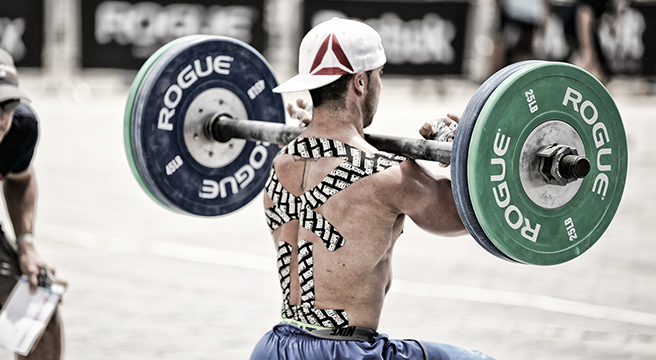
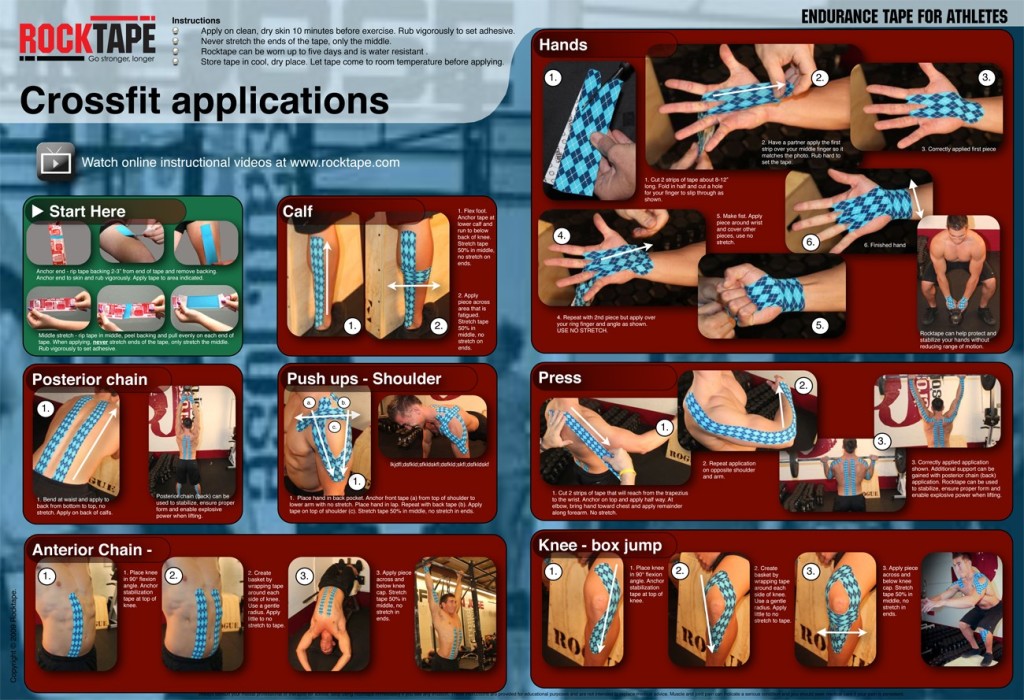
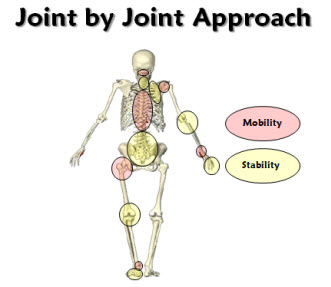
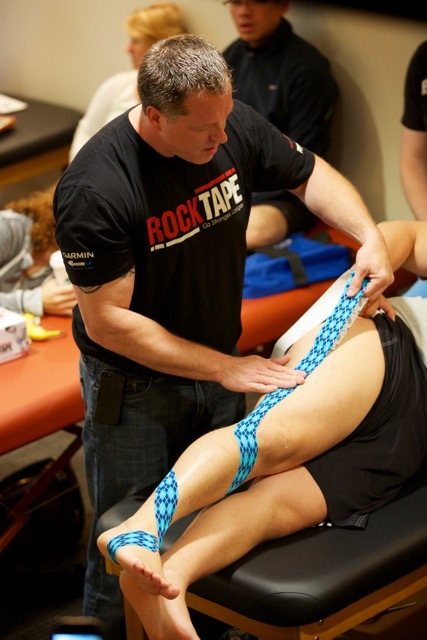
Leave A Reply (No comments so far)
You must be logged in to post a comment.
No comments yet